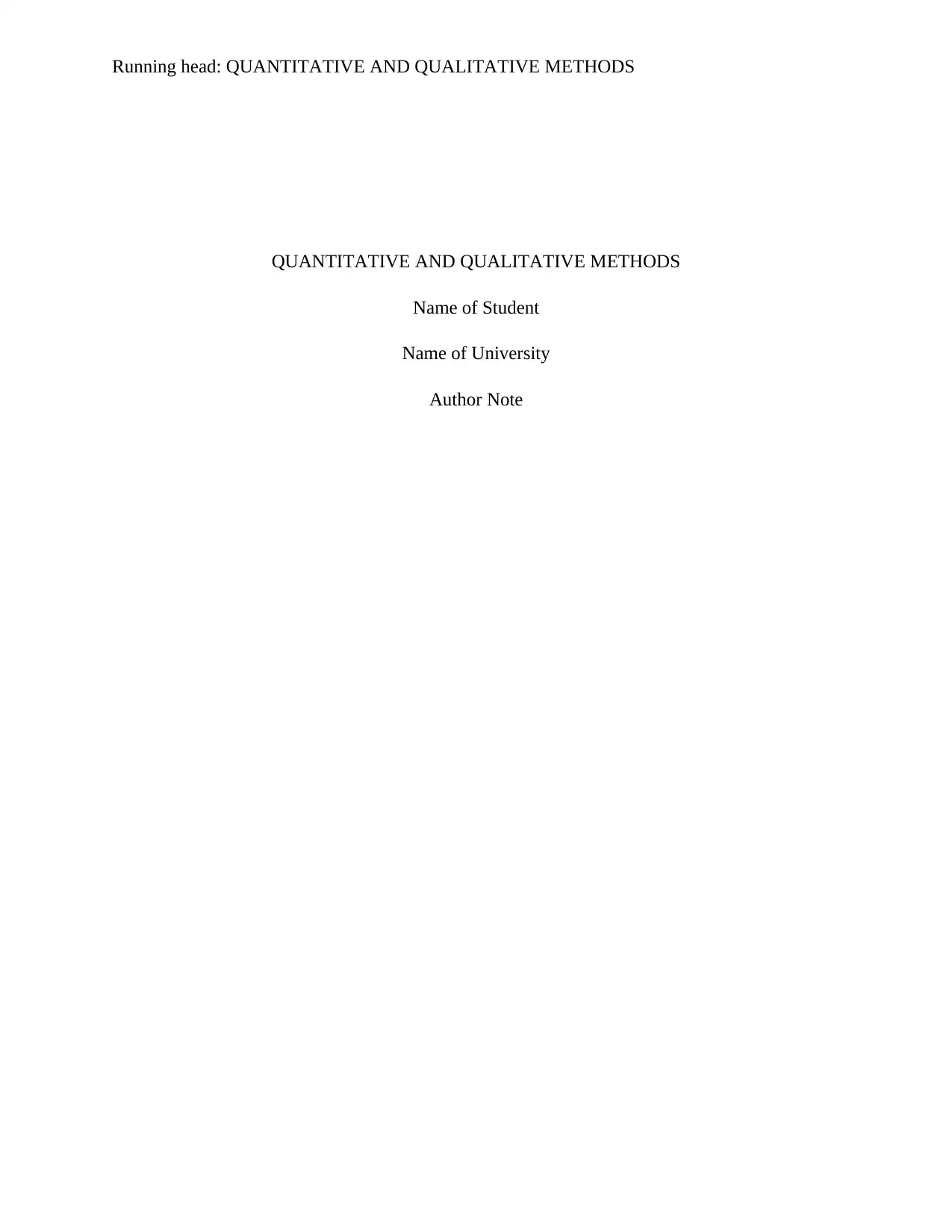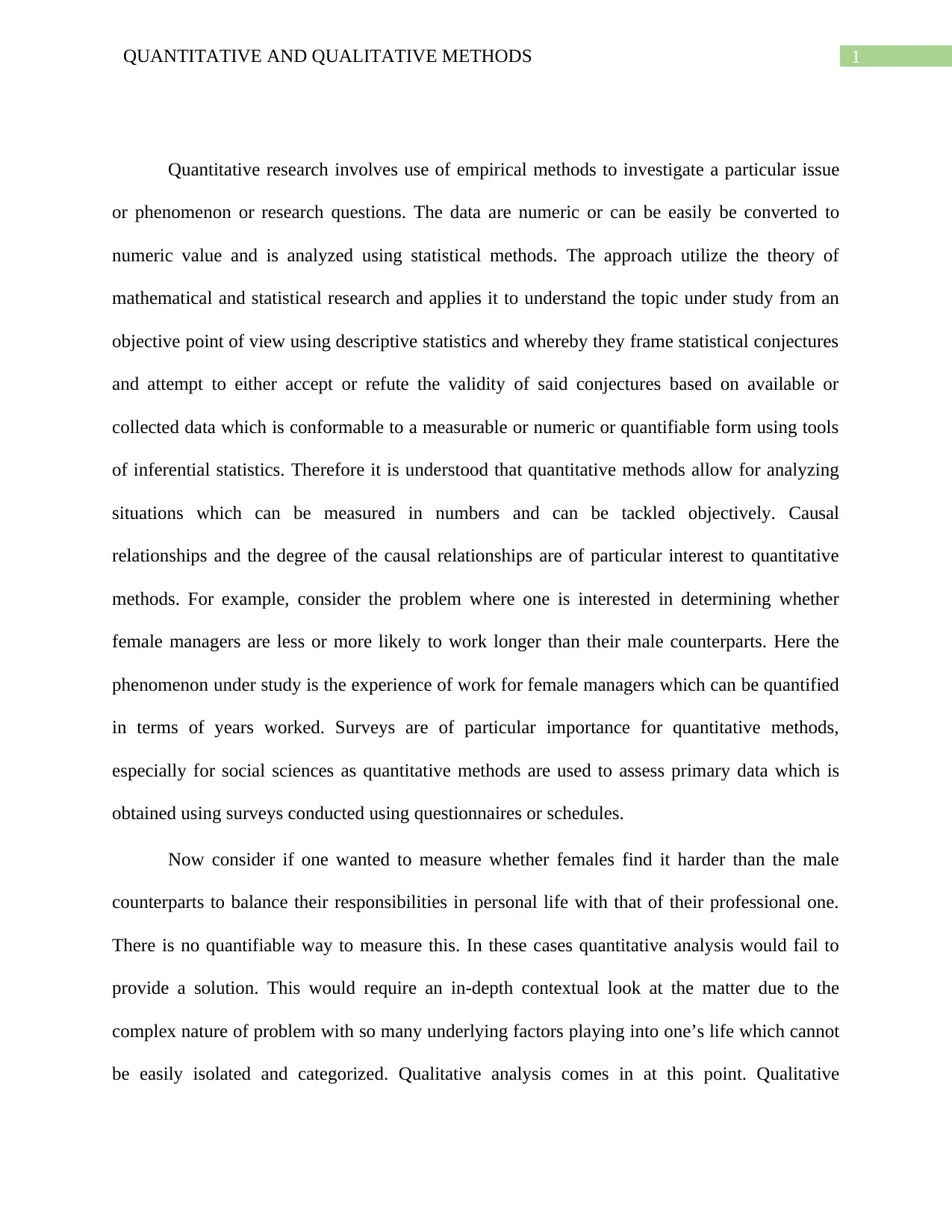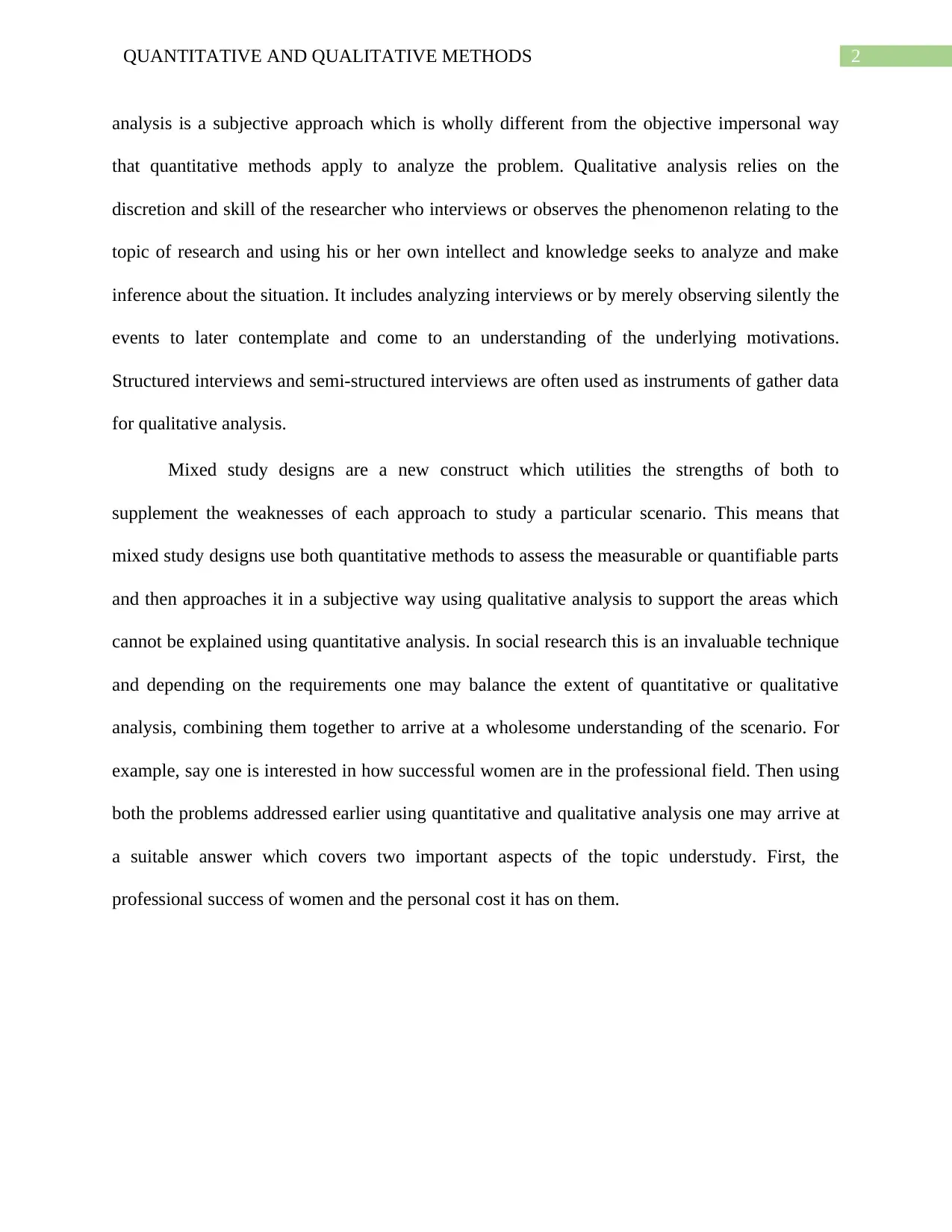Quantitative and Qualitative Methods: A Detailed Analysis
VerifiedAdded on 2023/06/12
|3
|629
|100
Essay
AI Summary
This essay provides a comprehensive overview of quantitative and qualitative research methods, contrasting their approaches, strengths, and weaknesses. Quantitative research employs empirical methods and numeric data, analyzed through statistical techniques to establish causal relationships objectively. Qualitative research, conversely, uses subjective analysis, relying on researcher discretion to interpret interviews and observations, offering in-depth contextual understanding. The essay also discusses mixed study designs, which combine both methodologies to leverage their respective strengths, particularly valuable in social research for a more holistic understanding. Examples are provided to illustrate the application of each method, emphasizing how mixed methods can address complex research questions by integrating quantifiable data with qualitative insights.
1 out of 3









![[object Object]](/_next/static/media/star-bottom.7253800d.svg)